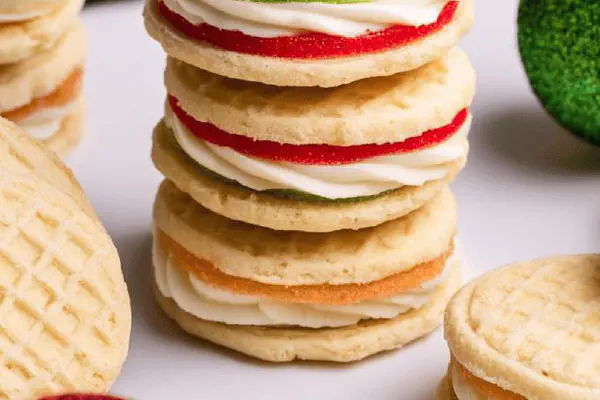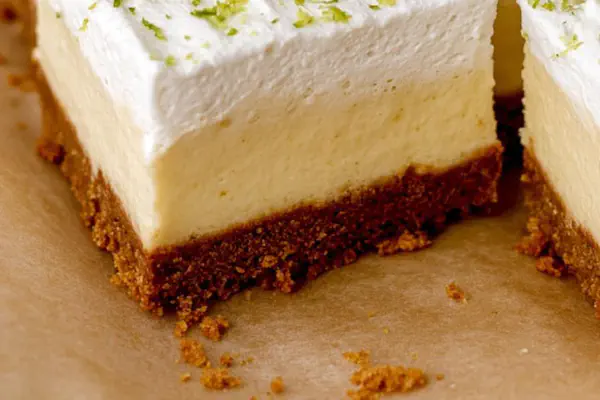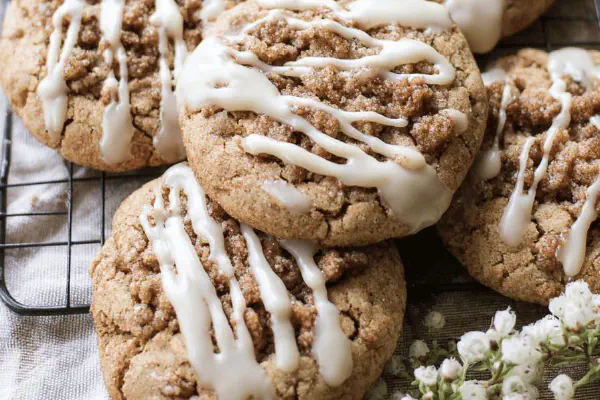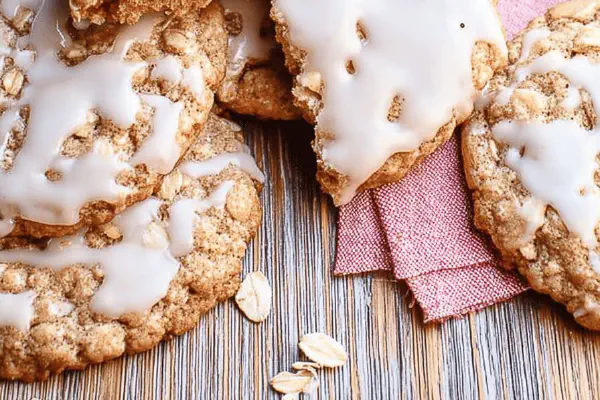Cream Wafer Cookies

By Emma
Certified Culinary Professional
Ingredients
- 1 cup unsalted butter room temp
- 1 1/2 cups all-purpose flour sifted
- 3 tablespoons heavy cream or half and half
- 1/4 cup granulated sugar for coating
- Filling: 1/2 cup unsalted butter softened
- 3/4 cup powdered sugar sifted
- 1 teaspoon vanilla extract
- 1-2 tablespoons heavy cream or milk
- Pinch salt
- Optional gel food coloring
About the ingredients
Method
= Cookies =
- Beat butter in stand mixer with paddle 4-5 minutes, pale fluffy texture vital here, start to smell faintly nutty, should lighten in color like softened cream. Use electric hand mixer manually if no stand mixer; low speed keeps air in.
- Add sifted flour and cream, mix briefly until dough just comes together; over-mixing toughens cookies. Form ball, wrap tight in plastic. Refrigerate overnight or at least 8 hours. Chill firms butter, helps rolling thin without cracking.
- Next day, preheat oven to 370F instead of 375F to slow edge browning, better crisp. Prepare rimmed baking sheet with parchment.
- Pour granulated sugar onto shallow dish or pie plate.
- Lightly flour clean counter or mat. Roll dough in small batches to thin 1/8-inch—this thickness crucial for wafer effect. Cut out with 1-inch round cutter. Transfer to sugar dish, flip each cookie and gently press sugar into both sides—adds texture, crackle.
- Arrange on baking sheet spaced apart. Prick center thrice with fork, lets steam escape, keeps cookie flat. Skip pricking, cookies balloon, ruin thin shape.
- Bake 7-9 minutes watching closely—edges just start to pale golden, avoid deep browning. The aroma changes from buttery sweet to toasted nuttiness. Hot cookies fragile; let sit 1-2 minutes to firm up before moving to cooling rack. Cool completely before filling, or filling melts.
= Filling =
- Beat softened butter 5 minutes until very pale, almost whipped cream texture. This takes time to aerate fully; don’t rush or cream will feel greasy.
- Add powdered sugar, vanilla, salt. Beat blending fully, then add heavy cream or milk 1 teaspoon at a time until fluffiness achieved without runniness. Filling texture should hold shape but spread easily.
- Divide filling if coloring, add gel colors sparingly; natural vanilla yellow can tint warm tone. Blend well.
- Fill piping bag with large round tip, squeeze generous dollop on one cookie’s center. Top with second cookie, press lightly—not too hard or cream spills.
- Or use small offset spatula or teaspoon. Pressing too hard will crack wafers; gentle is key.
- Cookies set quickly; store in airtight container layered with parchment to prevent sticking and sogginess.
= Tips and Substitutions =
- Butter is backbone; margarine can substitute in dough for dairy-free but alters crispness, less flavor. Coconut oil adds a slight tropical note; refrigerate well for rolling.
- Heavy cream can be swapped with half and half or whole milk for lighter fat dough but watch texture.
- Sugar coating essential for crisp shell; powdered sugar alone won’t give crunch.
- Don’t over-bake—cookies lose wafer-like texture if browning deeply. Visual cues trump timers.
- If dough cracks rolling, let rest 10-15 minutes room temp or warm hands gently smooth cracks before cutting.
- If filling too stiff, drizzle milk slowly; too loose add powdered sugar by teaspoon.
- For flavor twist, add zest (lemon, orange) to dough or filling. Cinnamon or nutmeg in dough works too.
- Works well with matcha or cocoa powder in dough if flour reduced slightly.
- The pricking step critical to avoid bubbles or air pockets causing lumpy cookie surface.
- Resting cookies after baking allows them to crisp up; fresh out oven they’re fragile, soft.
- Fill and sandwich only when cookies fully cool to avoid melting filling.
Cooking tips
Chef's notes
- 💡 Whip butter 4-5 minutes until pale fluff. Timing here counts more than speed. Stand mixer ideal; hand mixer if not, keep low speed or air escapes. Butter aeration critical to texture, smell shifts from dull to faintly nutty. Underbeat and cookies tough, overbeat rarely a problem but watch texture change.
- 💡 Chilling dough overnight firms butter, makes rolling thin easier. Dough too warm tears, too cold snaps under roller. Wrap tight; plastic prevents drying cracks. If cracks happen, rest dough 10-15 mins at room temp or smooth by hand before cutting. Rolling thin at 1/8-inch gives wafer crunch but watch thickness closely.
- 💡 Sugar coating both sides adds crackle and texture; granulated sugar only, powdered sugar dulls surface. Roll dough lightly floured, no excess or sugar won’t stick evenly. Dip or roll cut cookies in shallow sugar dish, press gently both sides. Skipping sugar coats leads to dull cookies, no snap sound when bitten.
- 💡 Prick each cookie 3 times center with fork. Critical step for venting steam, prevents puffing or bubbles. Skip pricks and cookies balloon, lose wafer effect. Baking at 370F not 375F slows edge browning. Watch cookies visually; edges just pale golden, centers still light. Baking time varies so smell toasted nuttiness, look for subtle aroma change as cue.
- 💡 Filling whipped butter 5 mins to pale cream texture. Add powdered sugar, vanilla, salt; mix fully before cream. Heavy cream or milk added 1 tsp at a time to adjust fluff without runniness. Overrun filling breaks structure, under whipped feels greasy. Add gel colors sparingly, mix well if tinting. Fill only when cookies cool or cream melts, store layered in airtight container with parchment to avoid sogginess.
Common questions
How to fix dough cracks?
Rest 10-15 mins room temp. Warm hands smooth if still cracky. Wrapped tight slows drying but breaks can happen. Sometimes slight flour excess or cold butter cause it. Rolling temps matter more than pressure.
What if cookies bake too brown?
Lower oven heat to 370F not 375F. Pull cookies early when edges blush pale gold. Visual cues beat timers here; cold dough, thin slices bake fast. Cooling helps firm fragile wafers. Brown means toughness, no wafer crunch.
Can I substitute butter?
Use margarine for dairy-free but expect less crispness and flavor. Coconut oil adds tropical note but dough must chill well. Butter key for structure so changes alter texture. Monitor dough softness and rolling thickness closely.
Best way to store finished cookies?
Airtight container layered with parchment. Keeps wafers crisp, stops sticking. Room temp fine short term; fridge risks softening wafer crunch. Reheat briefly if soggy but avoid moisture contact. Freeze if needed; thaw fully before filling.



